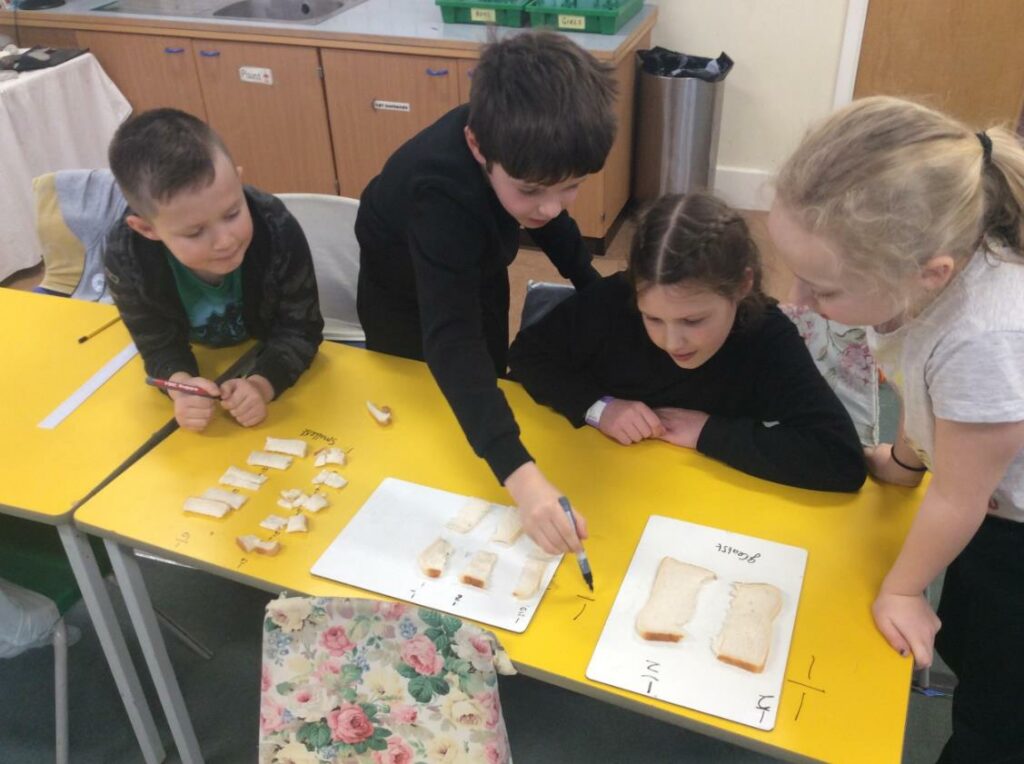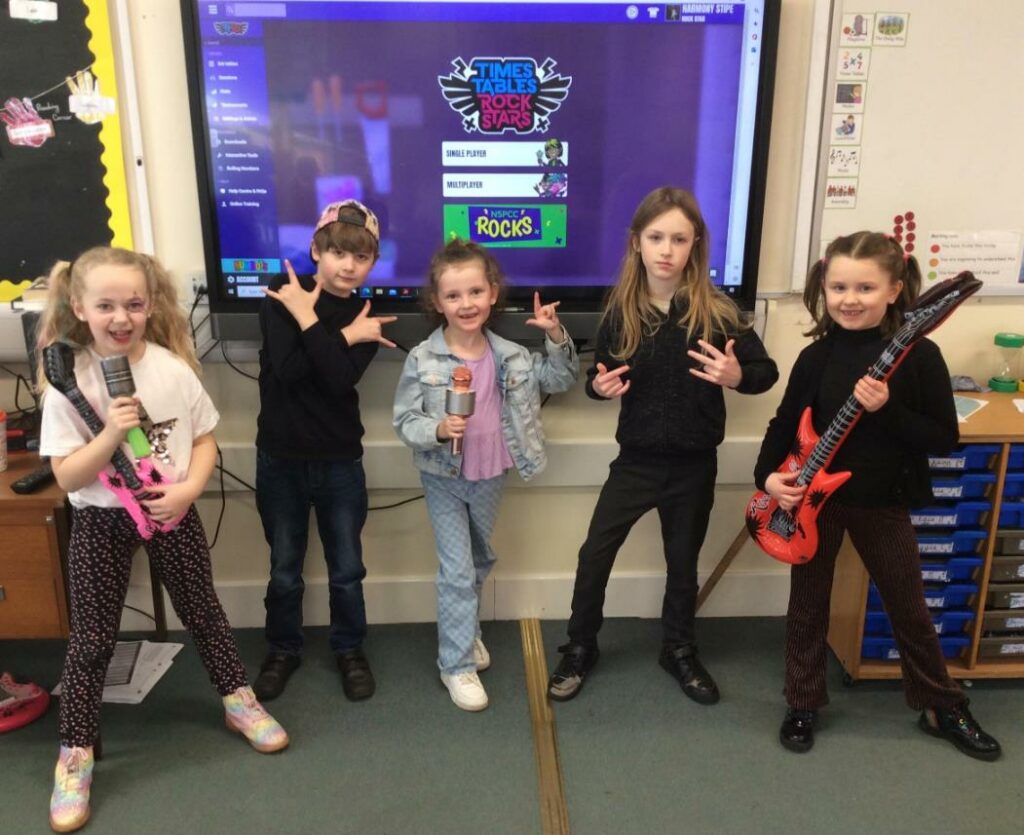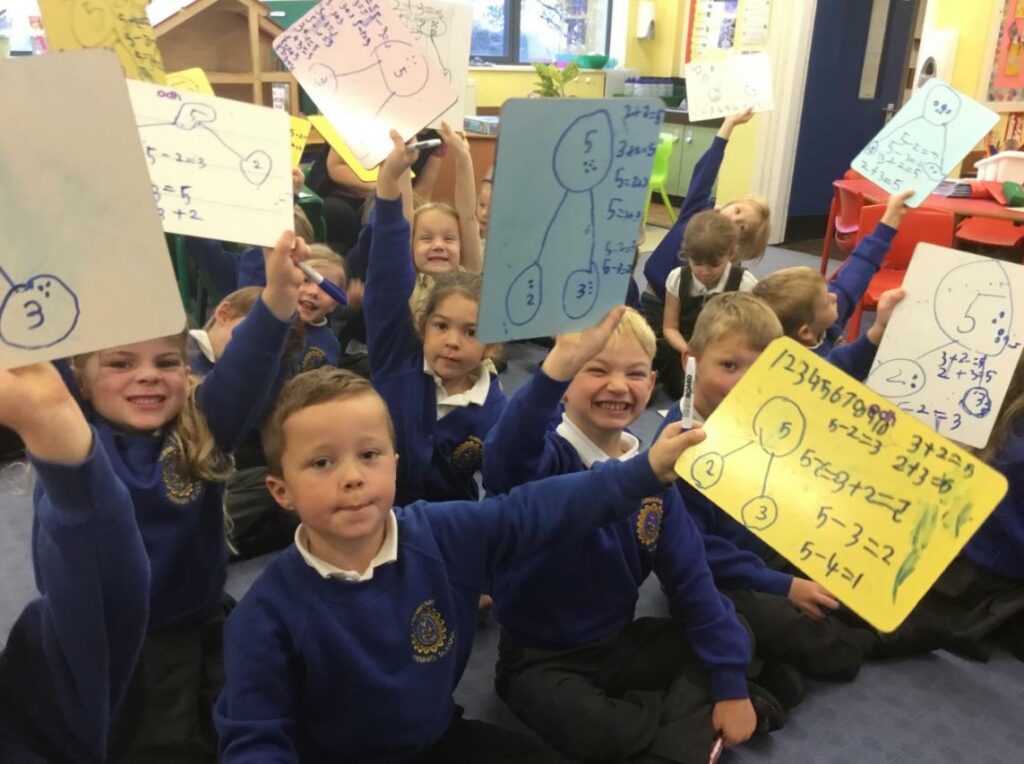Intent-
Why do we teach this? Why do we teach it in the way we do?
Mathematics is an important creative discipline that helps us to understand and change the world. We want all pupils at Hunmanby Primary School to experience the beauty, power and enjoyment of mathematics and develop a sense of curiosity about the subject with a clear understanding.
At Hunmanby Primary we foster positive can do attitudes and we promote the fact that ‘We can all do maths!’ We believe all children can achieve in mathematics, and teach for secure and deep understanding of mathematical concepts through manageable steps. We use mistakes and misconceptions as an essential part of learning and provide challenge through rich and sophisticated problems. At our school, the majority of children will be taught the content from their year group only. They will spend time becoming true masters of content, applying and being creative with new knowledge in multiple ways.
We aim for all pupils to:
- become fluent in the fundamentals of mathematics so that they develop conceptual understanding and the ability to recall and apply knowledge rapidly and accurately.
- be able to solve problems by applying their mathematics to a variety of problems with increasing sophistication, including in unfamiliar contexts and to model real-life scenarios
- reason mathematically by following a line of enquiry and develop and present a justification, argument or proof using mathematical language.
- have an appreciation of number and number operations, which enables mental calculations and written procedures to be performed efficiently, fluently and accurately to be successful in mathematics.
Implementation
What do we teach? What does this look like?
Our whole curriculum is shaped by our school vision which aims to inspire all children, regardless of background, ability or additional needs, to enjoy becoming the very best version of themselves they can possibly be and to achieve their full potential.
We teach the National Curriculum following the White Rose maths scheme of learning. White Rose Maths helps children develop their conceptual understanding of mathematics by using concrete objects, pictorial representations and abstract thinking. White Rose frameworks follow the mastery approach to teaching maths which aims to help all children achieve excellence in mathematics. Following the scheme ensures that skills and knowledge are built on year by year and sequenced appropriately to maximise learning for all children. Maths coverage will be monitored by the use of the schemes as well as end of term assessment.
Children are taught Mathematics for approximately 1 hour and 10 minutes daily (split between two sessions: Maths and Mastering Number). Support is determined during each lesson to ensure secure understanding based on the needs of the child. Challenge is visible throughout the whole session, where children are asked to reason and prove their understanding at a deeper secure level.
What a lesson looks like –
- Flash Back 4 – A recap/retrieval of prior learning and skills
- Teaching slides – Powerpoint presentations are prepared for each year group to deliver lessons. Where appropriate, children will use concrete materials to support them in the classroom. Stem sentences will be used to challenge children throughout – how do you know? Can you explain? If we know this what else do we know? I wonder … Who agrees?
- Complete varied tasks set by the teacher at a pace which best suits the needs of the class. Concrete resources, adult support and peer support is built in accordingly to support the progress of all children.
- Challenge/extension questions on completion of the main task.
- An opportunity for all children to reason and problem solve is built into every lesson.
Staff may deviate away from White Rose if they feel the needs of their class can be met in a different way but the sequence of objectives must be followed. Teachers can use additional, high quality, materials to support teaching and learning.
Where pupils are working at a different key stage or key phase the teacher may plan their work from the appropriate age/phase of White Rose or use additional planning based directly on National Curriculum objectives.
Each classroom has a maths working wall which should be updated regularly to support learning.
Mastering Number; a ten minute bolt on to address number fact fluency (KS1 lessons and KS2 intervention)
Six stage teaching programme –
Stage 1 – Visual number foundations
Stage 2- Make and Break Numbers to 10
Stage 3 – Facts and Strategies within 10
Stage 4 – Ten and a bit facts
Stage 5 – Facts and Strategies across 10
Stage 6 – Extending facts and strategies beyond the grids
Year three children revisit Stage 6 during the Autumn term before progressing to a times tables focus. KS2 will use the ten minute bolt on to work on times table recall using TTRS. Once the children are confident with their times tables class teachers will use the time to develop fluency and instant recall based on the needs of the class.
Marking– Maths books are marked with ticks and crosses in red pen by the teacher and green pen by the children. A traffic light system is used to mark the work
Red = Objective not met
Amber = Working towards the objective but it is not yet fully achieved
Green = Objective met
Books will be stamped with Teacher Assisted or TA assisted work where the children have had adults to scaffold their learning. Anything unstamped has been completed independently.
All children are given the opportunity to reflect on their marking and given the opportunity to make corrections or ask questions to secure their understanding.
Impact
What will this look like? By the time children leave our school they will:
By the end of KS2 we aim for children to be fluent in the fundamentals of mathematics with a conceptual understanding and the ability to recall and apply knowledge rapidly and accurately. They should have the skills to solve problems by applying their mathematics to a variety of situations with increasing sophistication, including in unfamiliar contexts and to model real-life scenarios. Children will be able to reason mathematically by following a line of enquiry and develop and present a justification, argument or proof using mathematical language.
Lorem ipsum dolor sit amet, consectetur adipiscing elit. Ut elit tellus, luctus nec ullamcorper mattis, pulvinar dapibus leo.
Lorem ipsum dolor sit amet, consectetur adipiscing elit. Ut elit tellus, luctus nec ullamcorper mattis, pulvinar dapibus leo.



